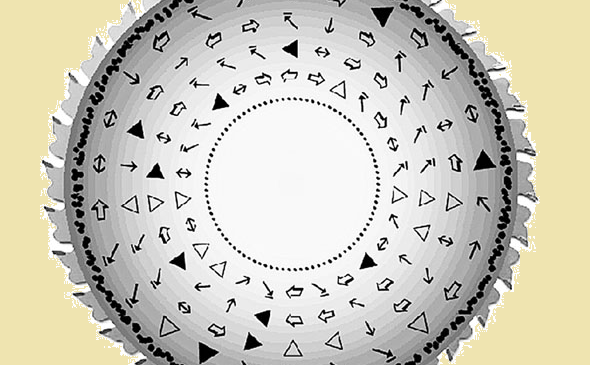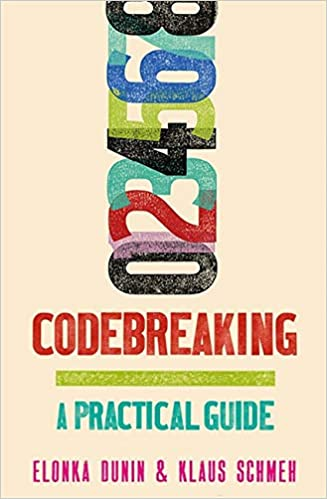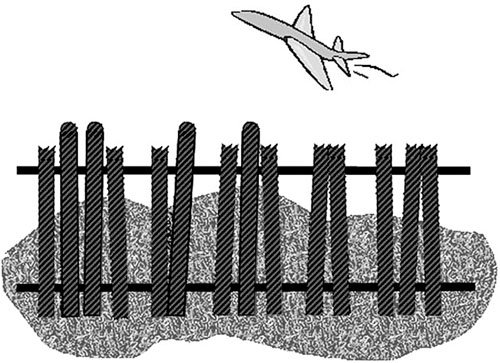A challenge cryptogram from a 2012 puzzle book is still unsolved. The author will award a book copy to the first one who breaks it.
Are you interested in the Voynich Manuscript? Together with Richard SantaColoma, I will give a webinar about The Book Noone Can Read tomorrow (Saturday, July 11, 2020) at 6pm German time (1600 GMT). The talk, which is organized by Bob Saltzman from the Crypto Collectors Group mailing list, is open for everybody and free of charge. If you want to watch it, send me a mail, then I will forward you the login data.
Revisited: The D’Agapeyeff cryptogram
Let’s now come to another book. One of the most popular unsolved crypto mysteries is known as the D’Agapeyeff cryptogram. It is a challenge ciphertext printed on the last page of the 1939 book Codes and Ciphers written by the Russian-born Briton Alexander D’Agapeyeff.
The D’Agapeyeff cryptogram was meant to be solved by the readers of the book, but apparently this never happened. Alexander D’Agapeyeff admitted that he had forgotten the solution himself. In later editions of the book, the cryptogram on the last page was omitted. For more information, check my blog post from 2017.
Meanwhile, the D’Agapeyeff cryptogram has become a major crypto mystery, mentioned in many “top ten unsolved ciphers” lists, for instance the following one presented in a video on YouTube. MysteryTwister C3, a web portal dedicated to codebreaking puzzles, has a D’Agapeyeff challenge in the X section (X stands for unsolved). Here’s the English version, here’s the German one. I am the author of this challenge, by the way.
♦♦♦♦♦♦♦♦♦ Coming November 2020 ♦♦♦♦♦♦♦♦♦♦♦♦♦
“One of the most helpful guides outside the NSA to cracking ciphers. But even if you don’t become a codebreaker, this book is full of fascinating crypto lore.”
Steven Levy, New York Times bestselling author of “Crypto, Hackers, and Facebook: The Inside Story”
♦♦♦♦♦♦♦♦♦♦♦♦♦♦♦♦♦♦♦♦♦♦♦♦♦♦♦♦♦♦♦♦♦♦♦♦♦♦
The Ivory Coast cryptogram
Earlier this week, I was contacted by German book author Frank Schwellinger, like me a computer science alumnus from the University of Karlsruhe.
Frank is the author of the 2012 book Warum gibt es kein Bier auf Hawaii? (“Why is there no beer on Hawaii?”). The title is an allusion to a famous German drinking song that denies the existence of a popular alcoholic beverage in the USA’s only island state. Check here for a video of this musical masterpiece.
Frank Schwellinger’s book presents a collection of 50 puzzles, each one being connected to a certain country. Some of the challenges are crypto-related. For instance, the first puzzle of the book is about an easy-to-solve steganographic message:
Can a reader find the name of the city hidden in this picture?
Challenge #2, which is a lot more difficult, appears to be cryptologic in nature, too. The background story is situated in the African country, Ivory Coast. The puzzle is about the following image:
Can you decipher the symbols on the wheel? According to the book, the solution is a German word. If this is correct, the plaintext is much shorter than the ciphertext.
Just like the D’Agapeyeff challenge cryptogram, Frank Schwellinger’s Ivory Coast ciphertext was never solved by his readers. However, contrary to D’Agapeyeff, Frank still knows how his ciphertext can be decrypted.
Can a reader solve the Ivory Coast cryptogram? If so, please leave a comment. Frank Schwellinger has promised to award a copy of the book to the first successful codebreaker. Good luck!
Follow @KlausSchmeh
Further reading: Ron Rivest publishes new time-lock puzzle
Linkedin: https://www.linkedin.com/groups/13501820
Facebook: https://www.facebook.com/groups/763282653806483/







Kommentare (35)